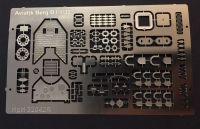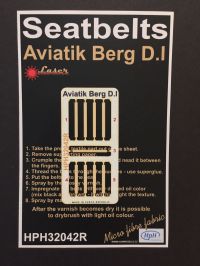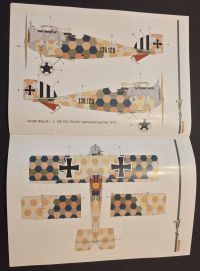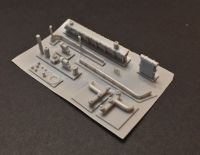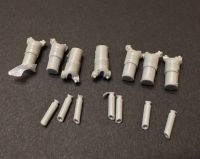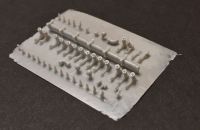HpH Models | 32042R: 1/32 Aviatik (Berg) D.I
Reviewed by Mike Swinburne
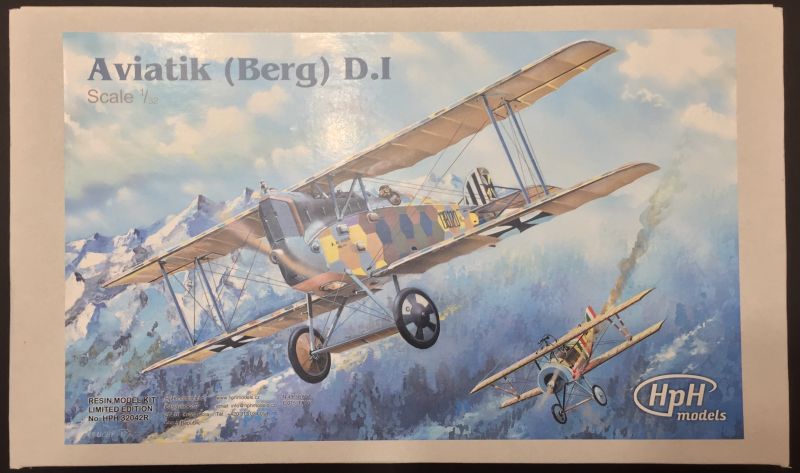
HpH Models' latest release in 1/32 is here, and sorry Grumman fans, it's not the F7F yet. Julius von Berg's D.I fighter was manufactured by Aviatik in Austria-Hungary and entered service in mid-late 1917 with the Austro-Hungarian Air Service. For additional information on the plane as well as a lot of photos of a surviving example in the Vienna Technical Museum, head on over to the Idflieg website. The kit masters follow HpH's trend of hand-made subject matter and the usual attention to detail is present.
Initial Impressions and Main Parts
Opening the box, one is greeted to the standard method of HpH packaging, with smaller parts contained in a series of zip-lock bags, the bags themselves separated into several compartments. The fuselage and wings are wrapped in bubble wrap in a separate compartment. The instruction manual and other non-resin items (decals, masks, PE, seatbelts) are laid on top of this along with more bubble wrap to keep everything securely packed. Looking over the various pieces, I did not notice any flaws such as air bubbles or worse.
The instruction manual is printed with color photos but in some areas are a bit hard to interpret due to the small pages with multiple small-ish photos. Rigging diagrams are also small photos with red lines drawn on top. Not perfect, but the rigging layout seems relatively simple so this shouldn't be too difficult to interpret.
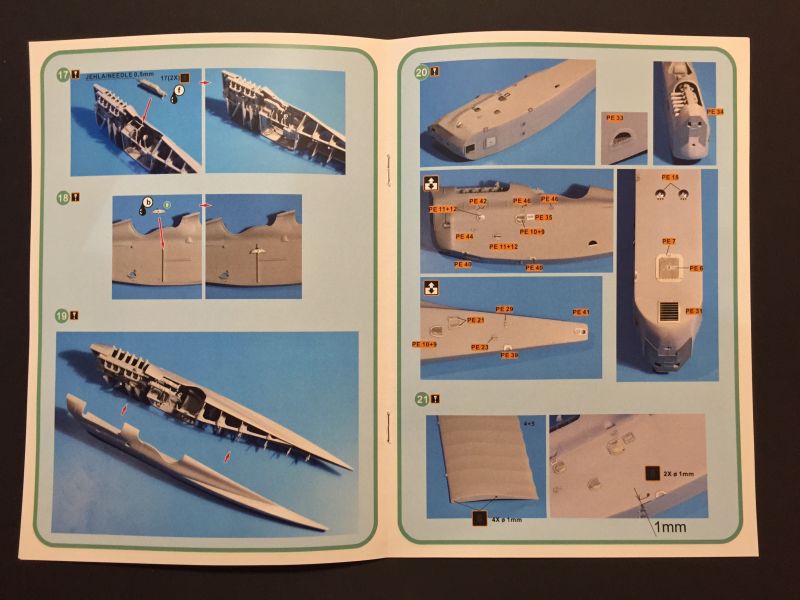
On the fuselage halves, there are scribed panel lines to separate the top coaming and cowl panels, but none to show wooden panels on the sides and underside of the fuselage. The exterior sides feature faintly-scribed lines to help the placement of the multiple photo-etch access panels and fairings that will eventually be attached.
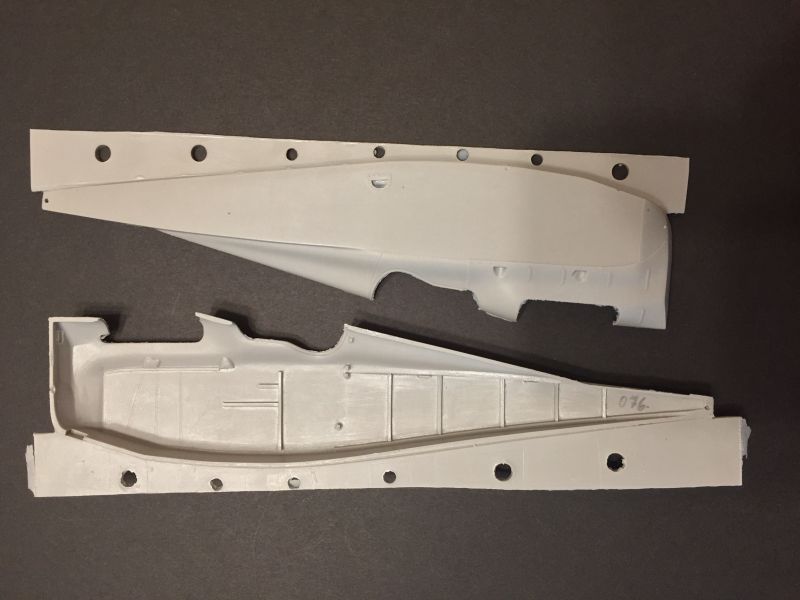
Wings feature separate ailerons and decent rib tape detail. To my eyes, the rib tapes are not as nice as those on some other WWI kits available in the scale, but for most they should be acceptable. I'm concerned with how flexible the wings are, especially the one-piece top wing; there is no reinforcing rod inside and I believe that the wings will drop before long if not addressed during construction.
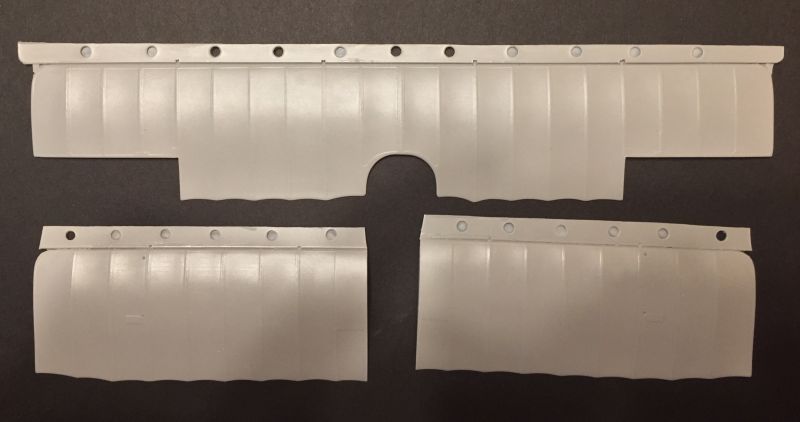
Included with the resin is a fret of photo-etch which covers the radiator, control panel, various smaller cockpit details and a number of access panels and fairings for the exterior. There's nothing too crazy or tiny with the PE items, and they shouldn't present any trouble during assembly. Fabric seat belts made by HGW are included, and the decal sheet with markings for one plane are the HGW Wet Transfer variety.
To depict the multi-colored hexagon camouflage featured on the fuselage and wing upper surfaces, the kit includes vinyl paint masks and full-color paint diagrams in the instruction manual. What is missing from this, however, is any suggestion of the recommended colors to use if the builder wishes to paint the hexagons. The workaround for those not wanting to mask and paint the majority of the plane in this manner is that the builder will need to pony up another 14 Euros for an HGW-produced decal sheet after paying 128 Euros plus postage to buy the kit direct from HpH. That feels like a bit of a kick in the gut for an already pricey kit.
I have not seen the decal sheet in person, but if it is of the same quality as HGW lozenge and wood decals I've used in the past, be very careful in application as my experience with all of these is that the decal film is extremely thin and very easy to damage. In contrast, the Wet Transfer decals included in the kit for the markings looks to be of a better quality than HGW's "standard" decals. I've also not used the Wet Transfer products before so I can't comment on how either compares to decals printed by Cartograf, MicroScale, Fantasy Printshop, etc.
Interior
The interior framing is made up of some parts integrated with the fuselage castings, and other parts that are combined as a subassembly forming everything behind the cockpit. I don't expect any of the resin cross bracing will be visible beyond the piece behind the pilot's seat. Comparing to the cutaway photos on Idflieg, the wood framing appears to be too heavy.
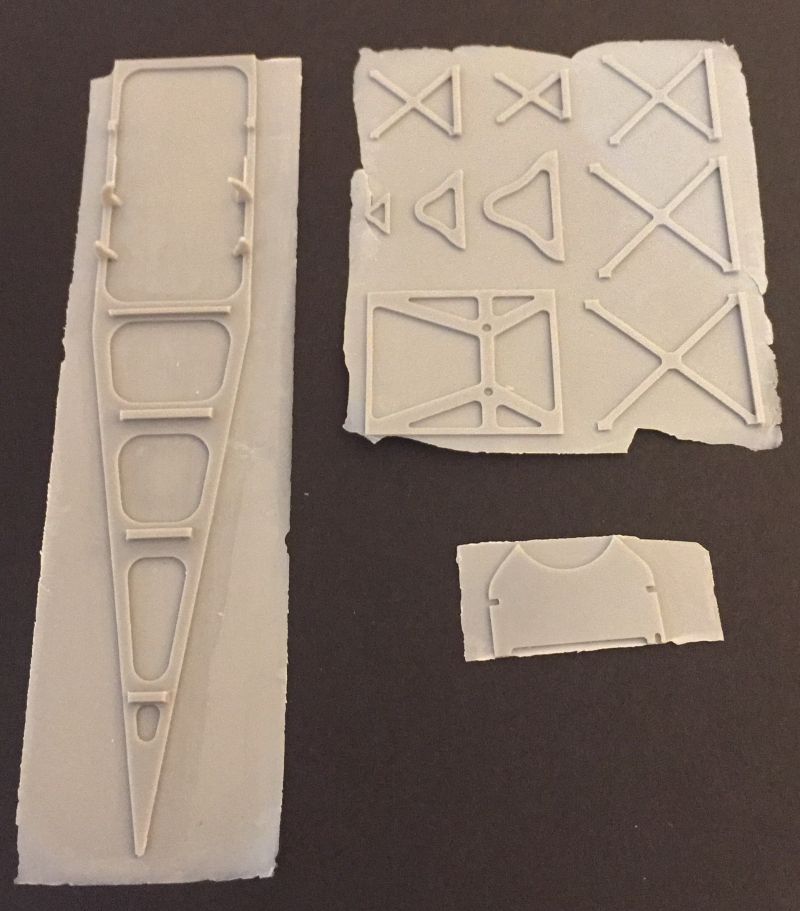
The cockpit itself is a mix of resin and photo-etch; strangely some details would have been just as easily cast into the existing resin parts instead of including as add-on photo etch. The instrument panel includes a resin back, PE face, and PE instruments that are glued on front. No detail would have been lost by casting this as one piece in resin, like the access panel (?) that gets glued onto the ammo box. With that said, detail looks like it'll be quite nice once everything is assembled and some pushrods and rudder cables are added. Care will need to be taken when removing and cleaning up the finer resin parts like the rudder pedal, control column the brackets / frames; these are finely cast and will look great once cleaned up and painted.
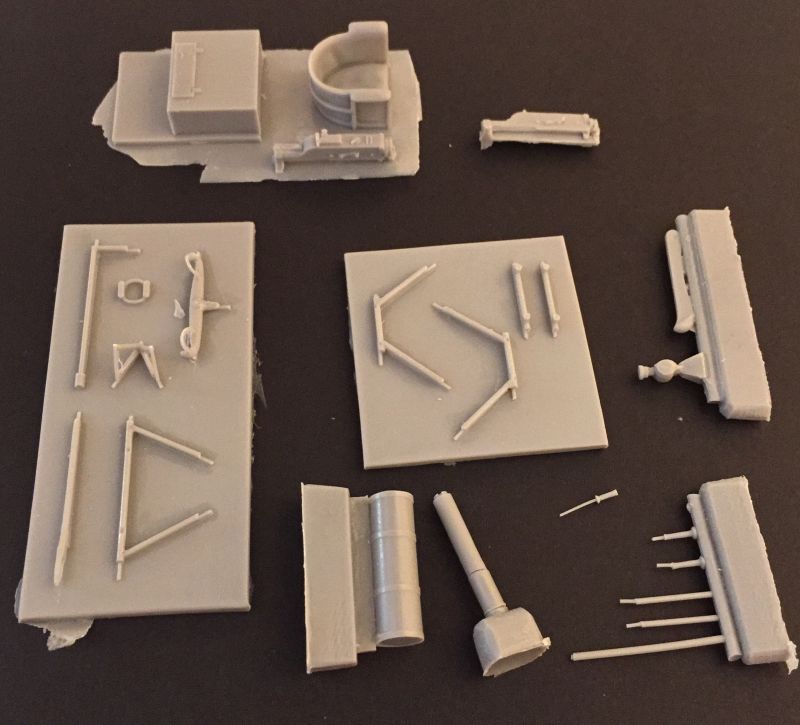
The wood frame of the seat is too heavy, but very little of this should be visible. The seat padding looks very nice and should look even better under paint. While not technically part of the interior, the Schwarzloze gun breaches are on the same wafer as the seat and look beautifully detailed. The instructions note to add .5mm tubing as the gun barrels but make no mention of the length needed.
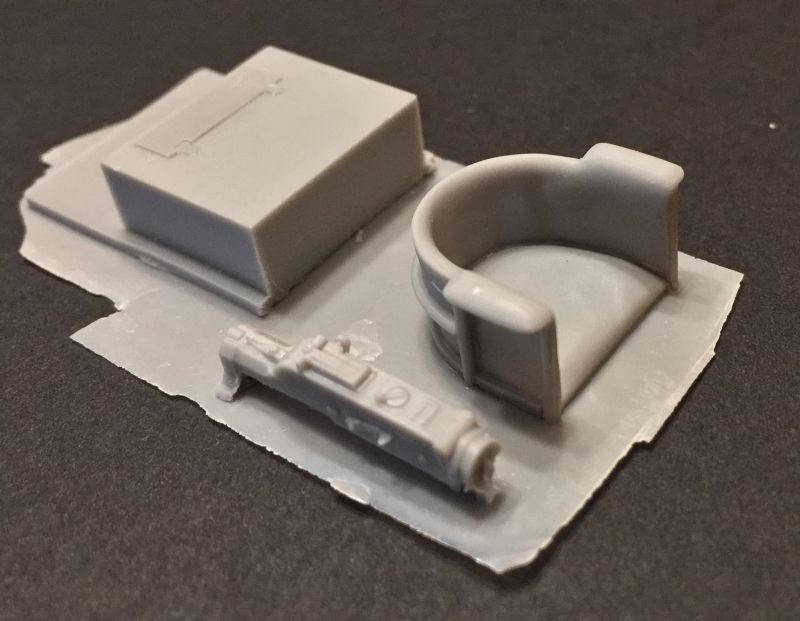
The final wafer of pieces for the interior includes the engine mounts, frames, and oil tank. There are several tanks in reality - one on this wafer and two cylindrical ones cast separately. One of these is oil but I don't know which is which and what the others would be. They're too small to be anything larger than a small reserve fuel tank assuming they're accurately sized. The engine mounts have engravings to help set the angle of the frames.

Engine
The engine is the masterpiece of the kit, with a level of detail and number of microscopic parts mirroring recent WWI engines from Aviattic and Taurus. This one is a 185 horsepower Austro-Daimler, which was used in early D.I airframes, and everything appears to be correct and well detailed. The Berg D.I series later used 200 HP and then 225 HP Austro Daimlers. For those wishing to depict a later aircraft, Copper State Models produces a 200 HP engine in resin, as well as a 160/185 HP engine with a lower parts count for those who want to build the early version but manage to overfeed the carpet monster with the kit pieces.
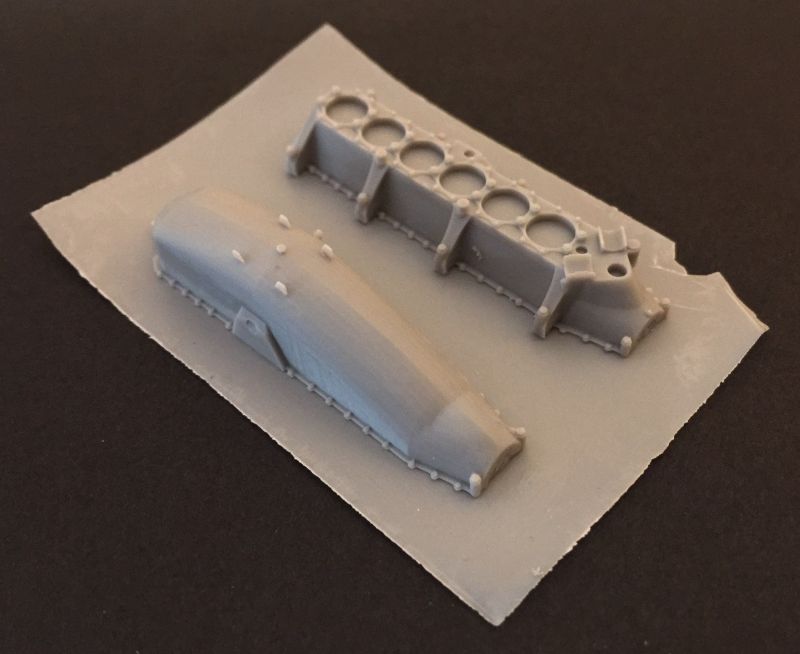
It does look like the engine may have been (partially) done with 3-d printing, as the bottom half of the crankcase has some signs of ridges if held at the right angle under light. Won't be a problem unless you display the engine separately from the kit. An extra cylinder and exhaust pipe were included in my sample of the kit. Extra spark plugs and rocker arms are also included on the wafer of tiny parts.
Exterior
The remaining resin pieces cover tail surfaces, the propeller, struts, wheels, tail strut and its mount. The interplane struts, cabanes, and landing gear all have wire reinforcement for strength. Good thing too, as it's practically critical in resin for items like these. The struts for the tailplane and tail are not reinforced, but these struts are not structural and seem to be small enough that wire won't be needed. A number of the photo-etch pieces are dedicated as access panels, fairings for control line entry holes, and the like. I have to wonder why at least some of these were not integrated into the fuselage masters before pouring resin; it could have been done with no detail lost and helped to speed up the build.

Disappointingly, the propeller is noticeably shallow (thin?) from front to back. The easiest fix would likely be to rob a spare propeller from a Wingnut Wings kit and reshape the profile of the prop blades. I can't figure out what the large "hood ornament" is on top of the radiator, but it's present in photos of the original aircraft and appears to match in shape and size. Maybe the D.I designer wanted to obstruct the last remaining area for forward visibility!

I've found two errors to note with the control surfaces. Elevator hinges are off center and to have then lines up, you have a very misalignment between the outer edges of the tailplane and elevators. One aileron in particular has rib tape that doesn't line up to the tapes on the wing, whereas the other is pretty much perfect with its alignment. I tested the offending aileron on both wings and its alignment is off on both. when on the left wing as in the photo, the misalignment of the rib tapes is more noticeable.
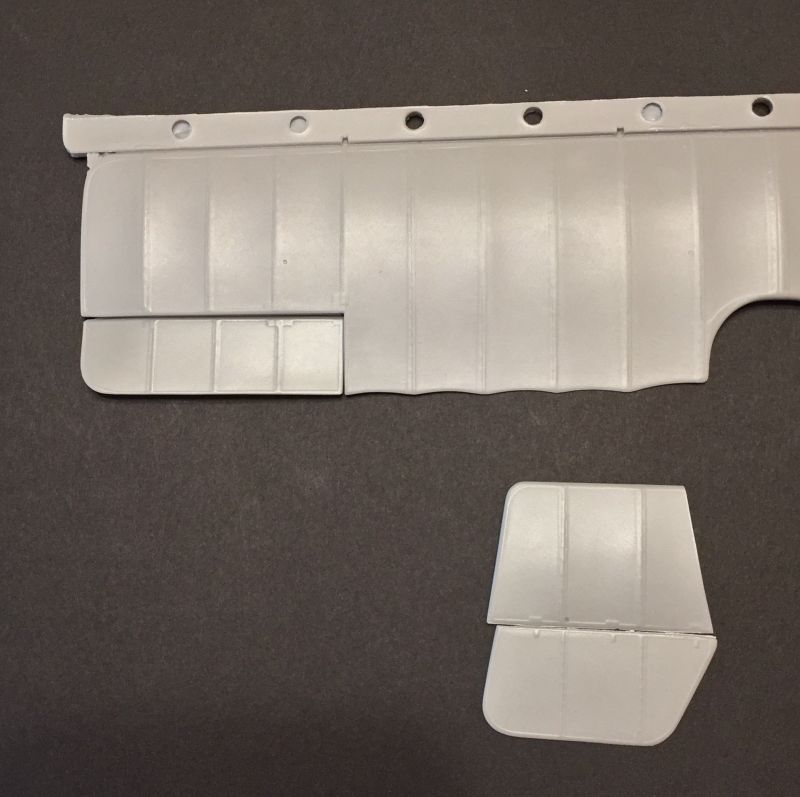
One builder working on this kit has enlarged drawings from Windsock and Japo books, and his photographs show pretty noticable discrepancies in the shapes of the tail surfaces when comparing to scaled-up drawings. Drawings aren't always completely accurate either, and while the shapes look ok to my eyes, compare the kit parts to photos of the real plane to determine if the shapes of the resin parts are acceptable to you if you're concerned about total accuracy.
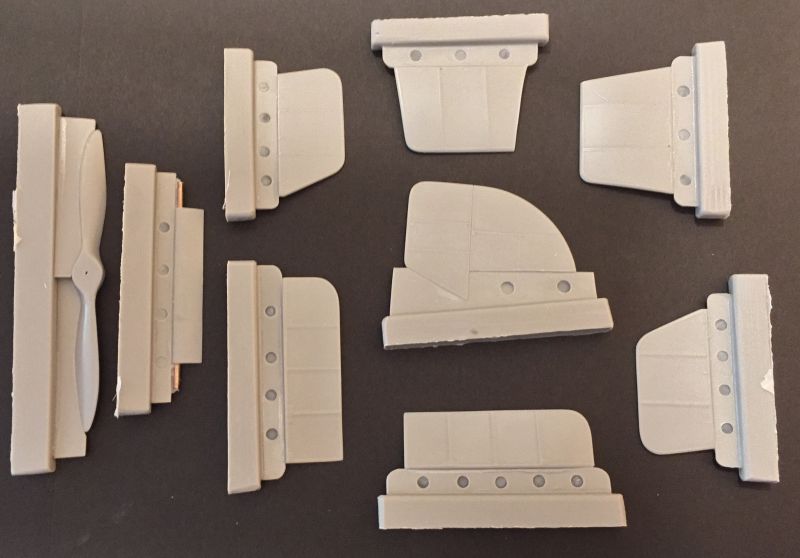
Wheel hubs and tires are all molded in halves. This would be a perfect opportunity to add some natural rubber tires if you're able to track down the right size grey rubber o-rings.
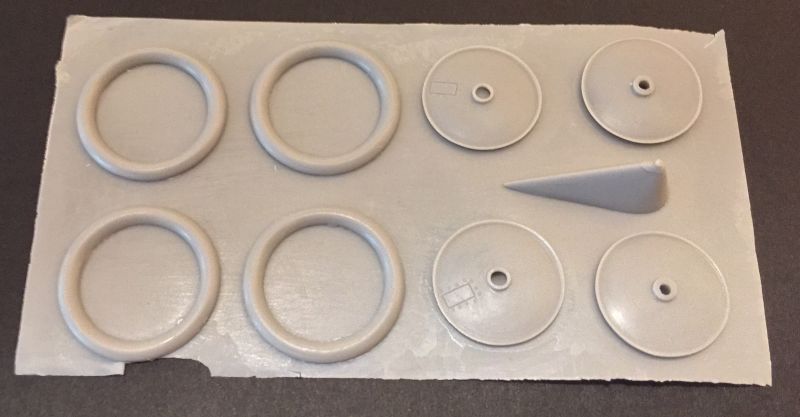
Conclusions
I have a mixed recommendation for the Berg kit. Taking the kit for what it's worth, a commercialized resin kit of a hand-made model, it'll need resin-building experience and a good way to address what I expect will be drooping wings before too long. With time taken on the build, the end result will be as beautiful and impressive as other HpH releases. For the cost of the kit though, I won't sugar coat that I'm not impressed by making the builder spend more money to buy the hex lozenge decals while not even providing color suggestions for those wanting to use the vinyl masks to paint the hexagons, and also the criticism that metal rods should have been added for strength into at least one of the wings. If you want a more accurate representation of the aircraft, you'll need to be prepared to spend time to correct the propeller and possibly the shape of the tail surfaces - check parts against photos and your preferred reference books to determine if what's needed and what you can live with.
Now, let's get to work on an ugly plane with interesting multi-colored hexagon camouflage!
© Mike Swinburne 2017
This review was published on Tuesday, July 04 2017; Last modified on Tuesday, July 04 2017

